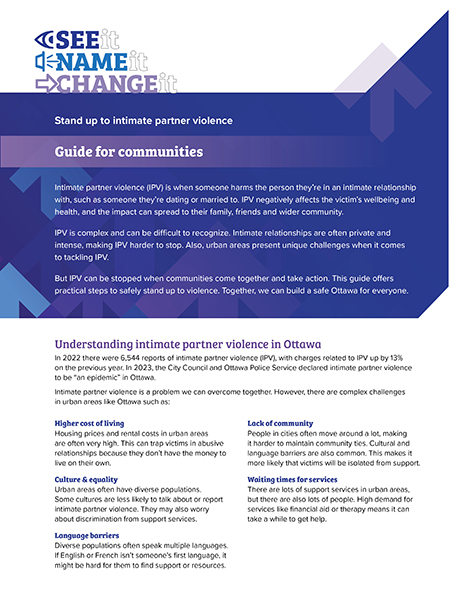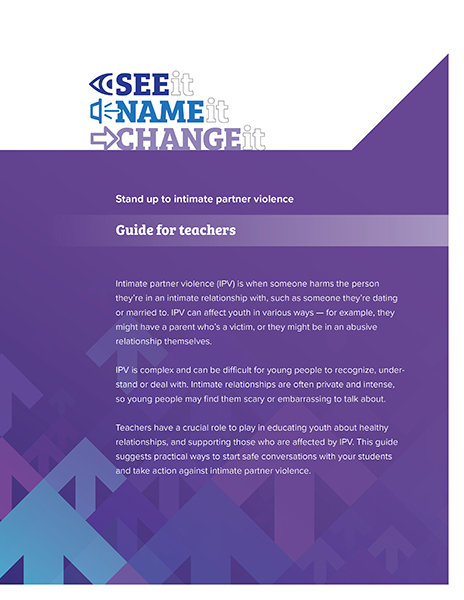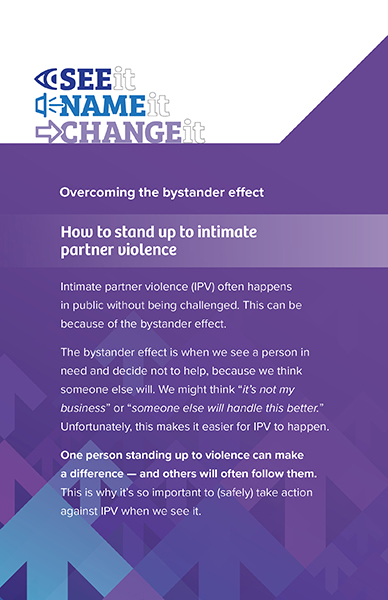Stand up to intimate partner violence
Learn safe ways to stop violence & support victims
Would you help someone in trouble? Most of us believe we would. But in reality, many people don’t act when they see intimate partner violence (IPV) happen in public. This can happen for lots of reasons. Violence can be unexpected and scary. It can also be hard to recognize when it happens in a busy environment. And then there’s something called the bystander effect…
The bystander effect is when we see a person in need and decide not to help, because we think someone else will. We may think “it’s not my business” or “someone else can handle this better.” Unfortunately, the bystander effect makes it easier for intimate partner violence to happen.
One person standing up to violence can make a big difference. For example, we’ve often heard from survivors that they wish a neighbour would have called the police when they overheard shouting, fighting and objects smashing. And when one person makes a stand, others often follow. That’s why it’s so important to (safely) take action against IPV when we see it.
Take a stand using the 5 D’s
Tips for using the 5 D’s
What if intimate partner violence is happening to me?
You’re not alone. There are many support services available to help you if you’re being harmed by your partner, including:
What is See It, Name It, Change It?
See It, Name It, Change It (SINICI) is an educational campaign that aims to create a safer community for all. It’s led by Ottawa Victim Services, a not-for-profit organization supporting the local community since 1998. The campaign was launched in response to the increasing intimate partner violence in Ottawa.




